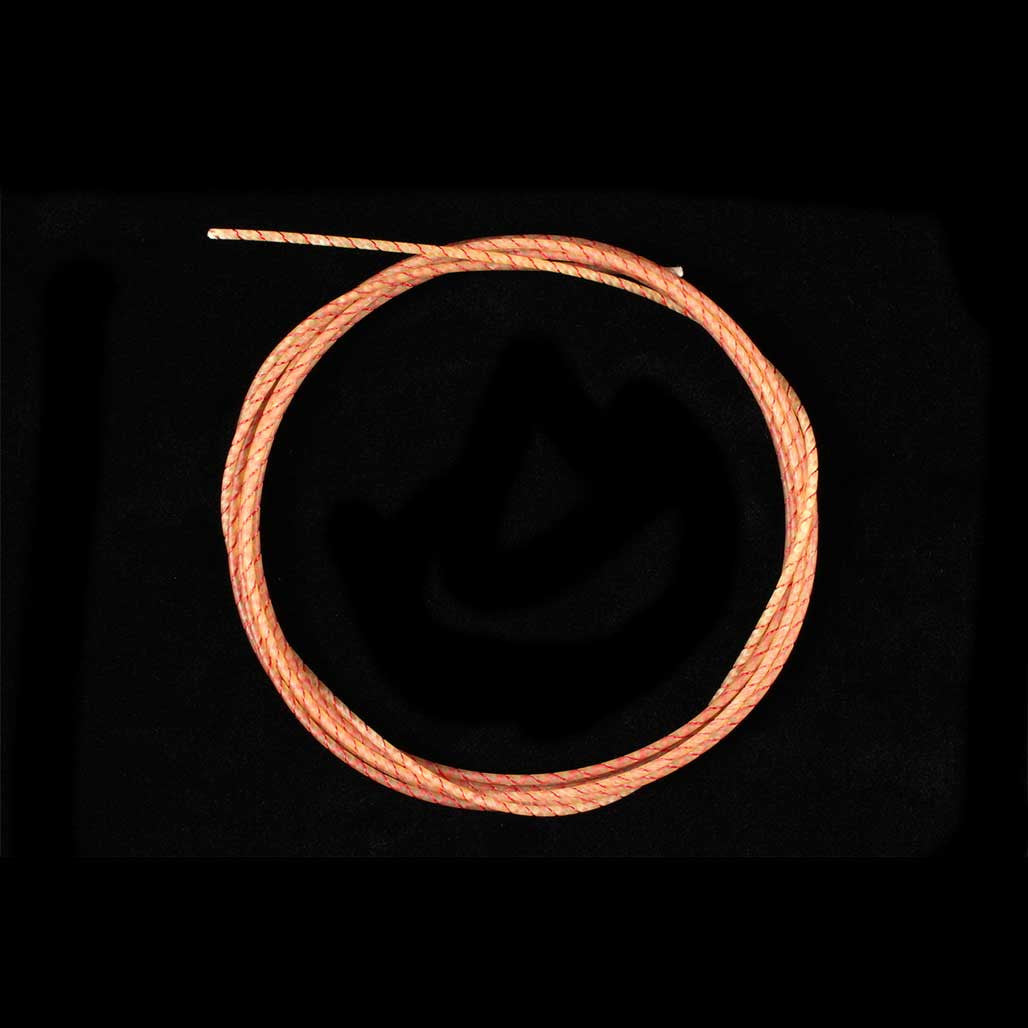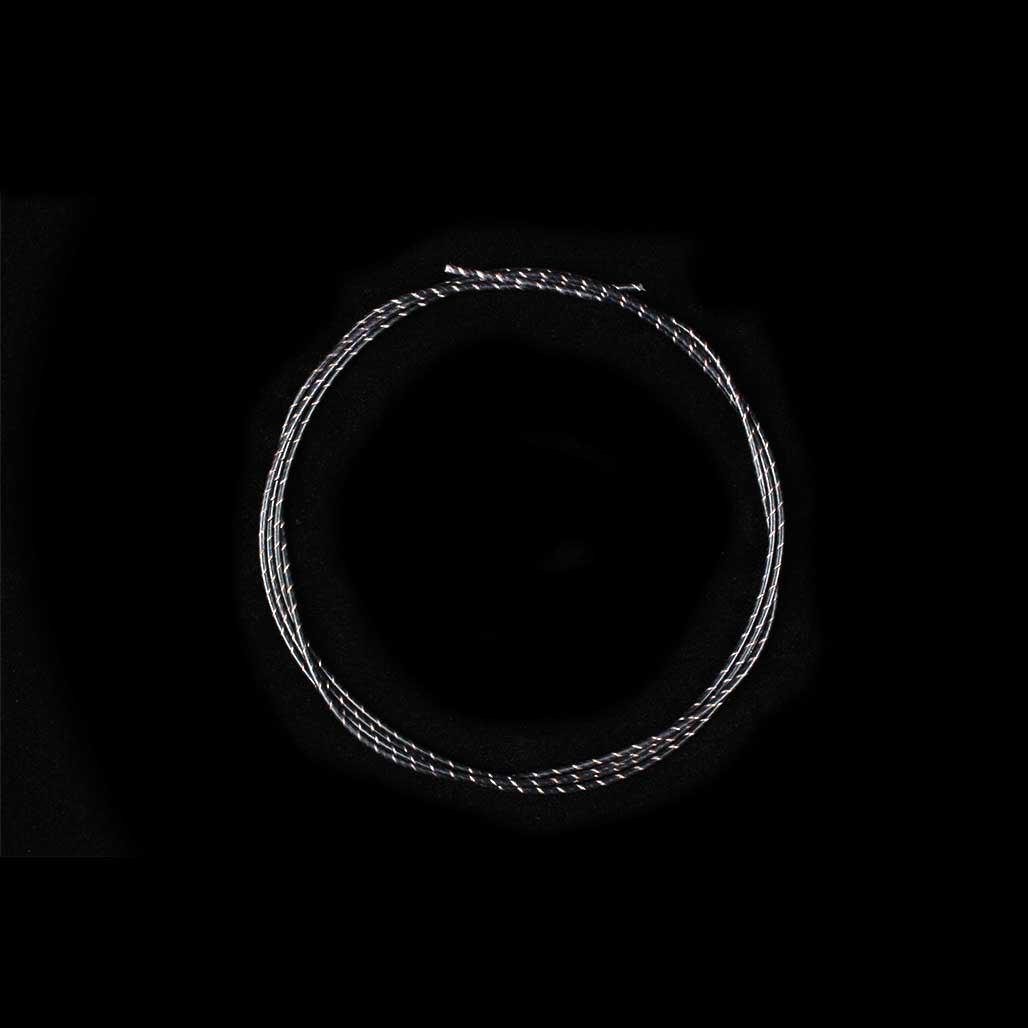Description
Gamut Academie strings are designed for Baroque instruments by those musicians playing historical performance practice at a=415, and are perfectly suitable for modern a=440 practice, but the result will be a little bit more tension at a=440.
| ET Tenor Viol C-5 Gimped Gauges | |
| Light | =1.80mm |
| Light+ | =1.86mm |
| Medium | =1.92mm |
| Medium+ | =1.98mm |
| Heavy | =2.04mm |
| Heavy+ | =2.12mm |
This is a single-length (48", 120cm) Gimped gut string intended for “Equal Tension” performance practice made of beef serosa with the Pistoy twist for extra flexibility.
The string comes with plain, unknotted ends. A 3-D printed ball end may be added for an additional charge. Instructions on how to tie a string knot are on the back of each package.
Plain gut strings are available with a natural or varnish finish. Natural strings are hand-rubbed with a light oil. Varnished strings have three coats of finish before being hand polished with the oil. There is an additional charge for varnished strings.
Gimped strings were first mentioned in an advertisement in the 1664 edition of John Playford’s “Introduction to the Skill of Music.” The exact historical nature of these strings is not known; and the strings we produce are based on the descriptions of gimped lace of the period.
The Gimped string is characterized by the barber-pole or candy stripe appearance of the wire in the twist of the gut. The addition of wire into the gut gives extra density to the string so it can be thinner than a plain gut string of the same weight. The Gimped string, being thinner and having some metal content, offers a brighter tone and quicker response than a plain gut string of the same gauge density.
Gimped strings are gauged by the Equivalent Diameter system. This means that a given Gimped string is equal in weight to a certain gut diameter, but the actual diameter of the Gimped string is smaller due to the added weight of the wire. A Gimped string may be gauged at =1.50mm, but the actual diameter of the string is 1.10mm. The thinness of the wire gives a bright tone.
Two types of Gimped strings are available: Copper Gimped and Silver Gimped. The silver wire, being heavier than copper, allows the silver gimped string to be even thinner than the copper gimped string. This might be an advantage on shorter string lengths where you would want a thinner string for better tonal response.
The standard Gimped string has a copper wire twisted into it which gives a nice, bright tone. The string is also available with a sterling silver wire twisted into the gut for an additional charge, which gives some slightly different properties. Since silver is heavier than copper, the resulting silver string is a little thinner when the same gauge of silver Gimped and copper Gimped are compared together. Silver wire is also a little softer than copper, so the silver Gimped string is a little more flexible and has a slightly warmer tone than the same gauge in copper. The copper Gimped string is a natural gut color and the silver Gimped string is dyed black.
Equal Tension is a concept that was used on violins historically. The idea is that each string has the same amount of tension, resulting in equal tension on all strings. The customary way to tension strings is to decrease the tension from the top string, which has the most tension, to the bottom string in decreasing amounts on each string. From the 16th to 19th centuries there are writers who mention or recommend equal tension, and this seems to have been one aesthetic that some players used. Merssene, in the early 1600s, mentioned that violin strings should have equal tension, but that in practice most players used less tension on the lower strings. It may be that the idea of “equal” was an intellectual concept of perfection and that, in practice, players found that lowering the tension on the thicker bottom strings was just more practical. Regardless of the extent of the historical use, many modern players find that this system of string allows a quicker and louder response from the instrument. The extra tension on the lower strings allows the bow to play more on top of the strings resulting in quicker bowing.
Because of the added diameter on equal tension strings, your instrument may need some adjustment at the tailpiece, bridge or nut to allow for the extra mass of the strings. The instrument may also need sound post or other adjustments to bring out the most responsive tone.
|


